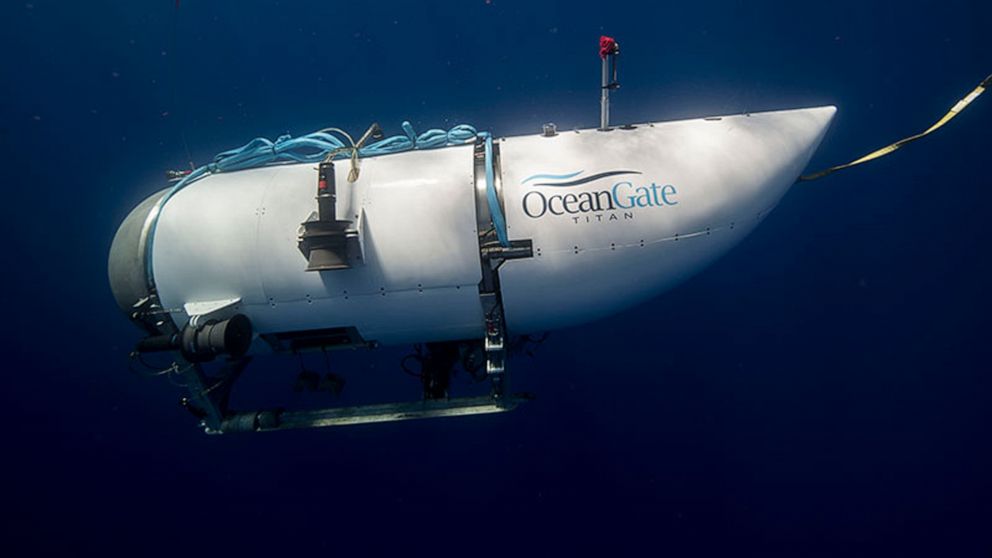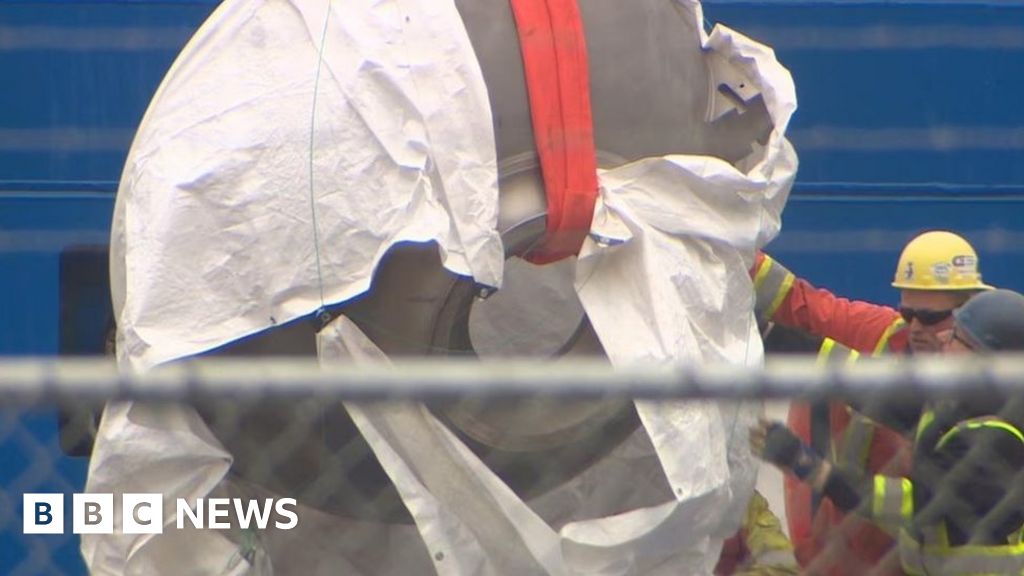While the recovery operation and investigation remains ongoing, here's what we know about the situation and how it unfolded.

abcnews.go.com
"A timeline of the missing Titanic tourist submersible
Multinational search and rescue efforts have turned into a recovery operation.
By
Morgan Winsor
June 27, 2023, 5:56 PM
Multinational search and rescue efforts for a submersible that disappeared while on a tour of the wreckage of the Titanic off the coast of Newfoundland, Canada, have since become a recovery mission following the grim discovery that the deep-sea vessel had imploded underwater, killing all five people on board.
While the recovery operation and investigation
remain ongoing, here's what we know about the situation and how it unfolded.
Sunday, June 18
The
21-foot sealed craft, named Titan, submerged at 8 a.m. ET with
five people on board and a 96-hour oxygen supply. About an hour and 45 minutes later, the sealed craft lost contact with its operator, OceanGate Expeditions.
At 5:40 p.m. ET, the United States Coast Guard received a report of an overdue submersible. The Titan was supposed to resurface at 3 p.m. ET.
Monday, June 19
The U.S. Coast Guard in coordination with the Canadian Coast Guard and the Canadian Armed Forces conducted a surface search for the missing submersible using various aircraft, including one with underwater sonar capability.
Tuesday, June 20
As of 7 a.m. ET, crews in multiple aircraft had flown over an area of the Atlantic Ocean "roughly about the size of Connecticut" while "looking for any signs of surfacing," Rear Adm. John Mauger, commander of the First Coast Guard District, told ABC News.
Bahamian research vessel Deep Energy, which specializes in pipe-laying and has remotely operated vehicle capabilities, arrived at 7 a.m. ET to help with the search.
A source familiar confirmed to ABC News that there were reports of "banging" that were picked up by sonar in the search area sometime in the morning, but nothing has yet been found.
At 4 p.m. ET, a crew from the New York Air National Guard arrived on scene to help with the search.
Wednesday, June 21
At 12:18 a.m. ET, the U.S. Coast Guard announced via Twitter that a Canadian aircraft with sonar capabilities had "detected underwater noises in the search area." Remotely operated vehicle operations (ROV) were then relocated "in an attempt to explore the origin of the noises," according to the U.S. Coast Guard.
"Those ROV searches have yielded negative results but continue," the U.S. Coast Guard tweeted.
Data on the noises was sent to the United States Navy to be examined, according to the U.S. Coast Guard.
That evening, a U.S. Navy official told reporters that a portable crane system capable of bringing up items from as deep as 20,000 feet had arrived in St. John's, Newfoundland, but was waiting to be welded onto a chartered ship to take it to the search area.
At the time, the U.S. Navy had not yet contracted a ship for the system, known as Fly Away Deep Ocean Salvage System or FADOSS, the official said. Once the ship is contracted, U.S. Navy teams will spend approximately 24 hours working around the clock to weld the system aboard the ship before it can leave port, according to the official. FADOSS is the salvage system the U.S. Navy uses for all of its deep-water recoveries.
Thursday, June 22
At 6:56 a.m. ET, the U.S. Coast Guard announced via Twitter that a remotely operated vehicle, or ROV, deployed by the Canadian vessel Horizon Arctic has reached the sea floor, beginning its search for the missing submersible. The Titan's 96-hour oxygen supply was forecast to run out sometime in the morning.
At 7:30 a.m. ET, the U.S. Coast Guard tweeted that the French vessel L'Atalante has deployed its ROV into the water in the search area.
The Royal Canadian Navy's HMCS Glace Bay arrived on scene at around 8 a.m. ET. The ship provides a medical team specializing in dive medicine and a six-person mobile hyperbaric recompression chamber, according to officials. Meanwhile, Canadian Coast Guard ships John Cabot, Ann Harvey and Terry Fox were also on scene and ready to provide rescue equipment and personnel, should assistance be required. A Royal Canadian Air Force CP-140 Aurora aircraft was maintaining continuous on-scene support with additional aircrews and assets, officials said.
At 11:48 a.m. ET, the U.S. Coast Guard tweeted that "a debris field was discovered within the search area by an ROV near the Titanic" and experts were "evaluating the information."
At 2:49 p.m. ET, OceanGate Expeditions issued a statement saying that all five people aboard the Titan were believed to be dead.
During a press conference at 3 p.m. ET, the U.S. Coast Guard announced that an ROV has located the tail cone of the submersible about 1,600 feet from the bow of the wrecked Titanic. Additional debris found was "consistent with the catastrophic loss of the pressure chamber," according to Rear Adm. John Mauger, commander of the First Coast Guard District. The victims' families were "immediately notified," he said.
Five major pieces of the Titan, including its nose cone and pressure hull, were discovered by the ROV in a large debris field and a smaller debris field nearby,
suggesting a major implosion had occurred, according to Mauger. At the time, it was too early to tell exactly when the implosion happened. It was also unclear whether crews would be able to recover the bodies of those killed and how much of the vessel can be salvaged.
Mauger told reporters during the press conference that two ROVs, one from France and the other from Canada, will remain at the site to continue mapping the debris fields.
At around 6 p.m. ET, a senior U.S. Navy official confirmed to ABC News that an underwater acoustic detection system heard on Sunday what was likely the implosion of the missing submersible. The information was immediately shared with the U.S. Coast Guard and analysis continued afterward, the official said. Separately, a U.S. defense official told ABC News that an analysis of the "banging" noises picked up by sonar buoys on Tuesday were not from the Titan but were either natural ocean sounds, biological noises or noises associated with the surface response vessels."




www.bbc.com

